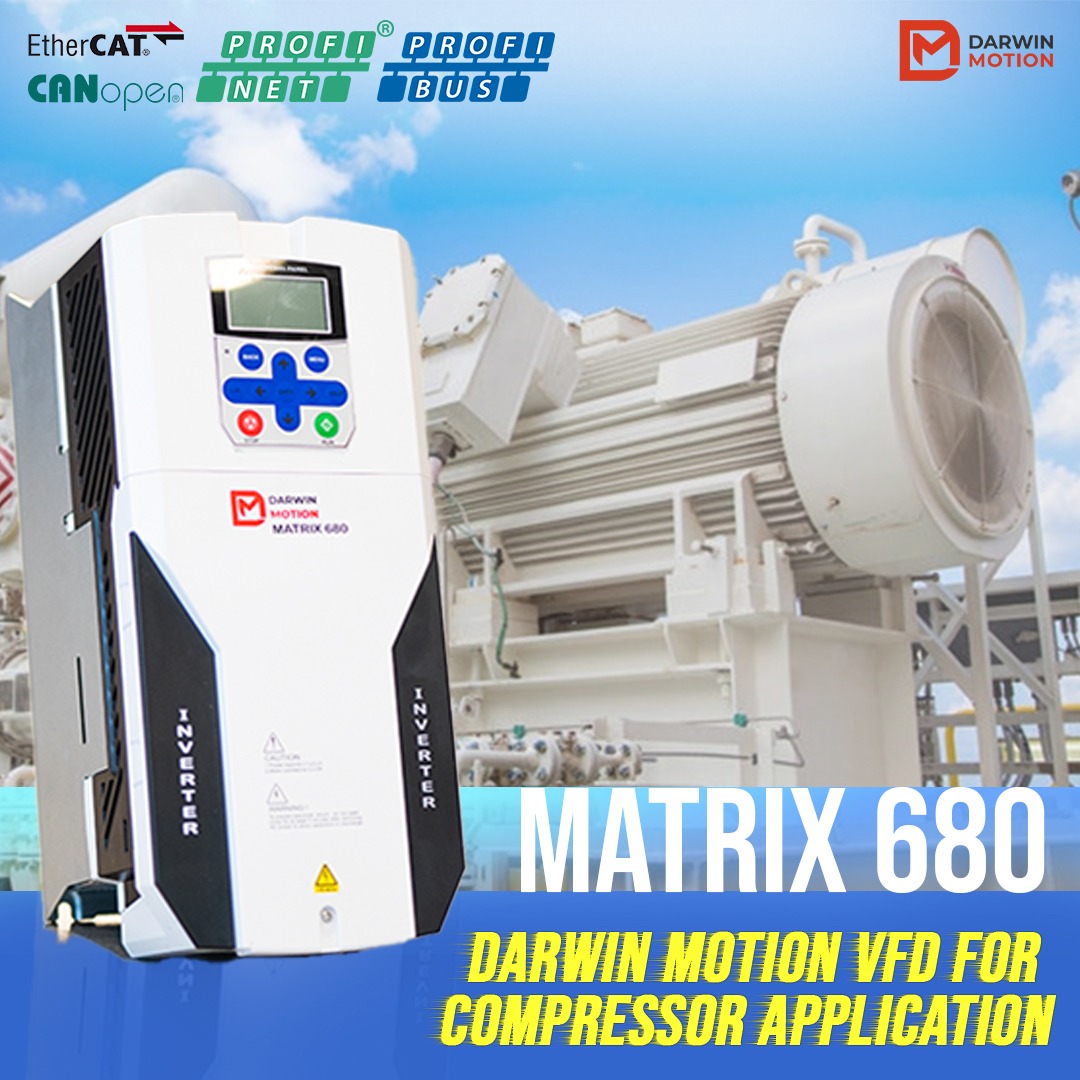Posted on 11th Dec 2023

Darwin Motion Variable Frequency Drives (VFDs), also known as adjustable frequency drives or variable speed drives, are devices used to control the speed of electric motors by varying the frequency and voltage of the power supplied to the motor. VFDs can contribute to energy savings in various ways:
Traditional motors operate at a constant speed, regardless of the actual requirements of the system they are driving. VFDs allow for variable speed operation, meaning the motor can run at different speeds based on the load demand.
By matching the motor speed to the actual requirements of the system, VFDs avoid the need for throttling devices (like dampers or valves) to control flow, which can waste energy.
Operating a motor at full speed even when less power is needed can lead to unnecessary wear and tear. VFDs allow motors to start slowly, gradually reaching the required speed. This reduces mechanical stress and extends the lifespan of the motor.
VFDs enable soft starting and stopping of motors, which reduces the initial power surge associated with motor startup. This eliminates the sudden inrush of current, minimizing mechanical and electrical stress on the motor and the power distribution system.
Motors are often oversized to handle peak loads, but they frequently operate at partial loads. VFDs optimize motor operation by adjusting the speed to match the load. Motors tend to be more efficient at partial loads when operating at reduced speed.
VFDs can improve the power factor of the motor, which is the ratio of real power to apparent power. A better power factor means that the motor draws less reactive power, reducing the overall power consumption and improving the efficiency of the system.
In certain applications, VFDs can be configured to recover energy during braking or deceleration. Instead of dissipating the braking energy as heat, the VFD can feed it back into the power system, reducing overall energy consumption.
VFDs provide precise control over motor speed, allowing for optimization of the entire industrial process. This improved control can lead to more efficient operation and energy savings.
VFDs allow for better matching of motor speed to the actual load requirements. This ensures that the motor operates at the most energy-efficient speed for a given application.
In summary, VFDs save energy by enabling variable speed operation, reducing wear and tear on motors, optimizing efficiency at partial loads, improving power factor, and providing better overall control of industrial processes.
Is this conversation helpful so far?
Darwin Motion offers Micro Drive- Matrix 900, DR Matrix 350 / Solar Drive, High Frequency Drive - DR Matrix 500, High Performance Drive - DR Matrix 680, Regenerative Drive - DR Matrix 880